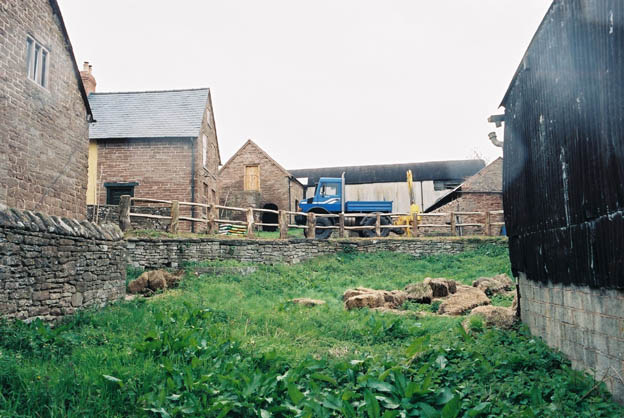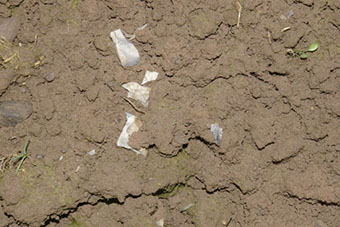
Llanfrother Farm
Llanfrother, on a rise above the right bank of the Wye, is probably the site of the original monastery of St Dyfrig. Hentland itself has often been suggested as the site of this monastery on the basis of the place-name, Hentland - 'hen lann' old church. But Llanfrother was Henfresroudre in 1334 which may mean 'the old place of the brethren'.
Dyfrig's first monastery was Hennlan super ripam Gui - 'the old church on the River Wye'. Llanfrother seems to match the description 'on the River Wye' rather better than Hentland, which is some distance away.
In the entry for Hentland in Casseys Herefordshire directory for 1858 there is - 'in certain pastures belonging to a farm in this parish, there is a place which to this day is called Llanfrawter - The Church of the Convent of the Brethren'. The entry continues with an early cropmark description 'At particular seasons, the foundations of extensive buildings may still be traced on the summit of the eminence rising from the Western bank of the Wye; all the materials, however that were above ground, have been used for the construction of walls etc'.
Llanfrother is a little more than a farm now, but for centuries it was a distinct settlement with its recognisable identity. Llanfrother was grouped together with the township of Kynaston in Henry VIII's taxation of 1523 - D(e) villat(is) de Kynnarston and Henfrowde.

flint scatter at Llanfrother
There may have been a settlement at Llanfrother long before Dyfrig's time though. Flint tools are produced by knapping them as flakes from a large piece of flint. What is left of this piece of flint is known as a 'core'. Four Mesolithic cores have been found in a field adjacent Llanfrother Farmhouse, together with several other tools including a flint knife and a scraper. In local Mesolithic terms this is a considerable assemblage. It may not be fanciful to suggest that millennia before it was utilised by Dyfrig's monks, there was a habitation site here, one of the earliest in Herefordshire.